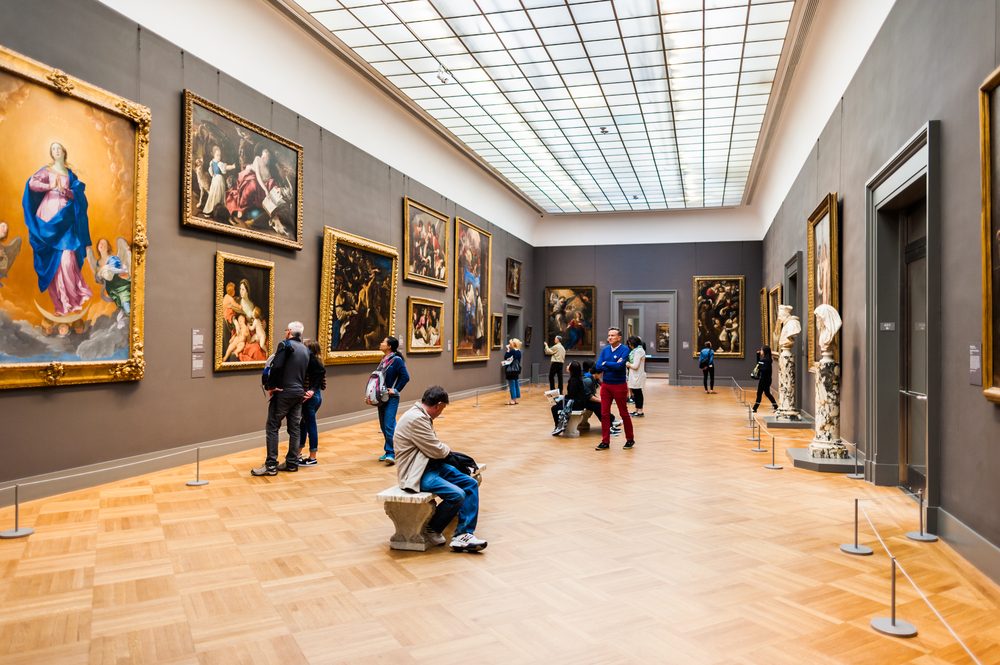In his essay “The Philosophy of Medieval Art,” Bishop Fulton Sheen opens with the statement, “There is no such thing as understanding the art in any period apart from the philosophy of that period.” In other words, far from being a frivolous elective course for aimless liberal arts majors, Sheen explains that the discipline of art history has the unique capacity to reveal the vital essence of past civilizations. A person could devote a research thesis to studying the innumerable details of life in the High Middle Ages or ponder the images on a few stained-glass windows and thus come away with a deeper idea of what that life was all about.
In his new book, Pilgrimage to the Museum: Man’s Search for God Through Art and Time, writer and former Wall Street executive Stephen F. Auth applies Sheen’s idea to the vast collection of the Metropolitan Museum of Art in New York City. As the title implies, Auth hopes to use art as a lens to examine mankind’s ever-changing relationship to God. In this way, he demonstrates that art can help guide people today on their own spiritual journey as it has countless others through the ages.
Auth mostly dispenses with the technical terms unique to the visual arts and speaks to the heart, as he declares in his introductory chapter: “We won’t be looking only at paintings and sculptures. We’ll be looking into our own souls too.” Even for those who enjoy art routinely, Auth revitalizes the experience by asking us to reflect on the truth conveyed by the artwork as well as its beauty. He makes it clear that touring a museum is more a pilgrimage than a high-minded leisure activity.
Auth begins in Ancient Egypt, analyzing the images on the Tomb of Perneb as well as the Seated Statue of Hatshepsut. Both pieces were intended to divinize the pharaohs, depicting them as far greater than their subjects, as immortals. Auth sums up the Egyptian faith embedded in these works in three words: “man as God.” Hubristic pride is on full display as artists put man on a literal pedestal.
Auth then turns to the ancient Greeks, who sought to depict human perfection, bringing the gods down to earth. He shows this in the statues Kouros, Diadoumenos, and Venus Genetrix. Despite being centuries apart in their creation, each attempts to represent the gods in material form. In Auth’s estimation, they betray the Greek artists’ “search for God, for their Creator, who they reasoned was discoverable through logic and reason and who is, in fact, present among us—in fact, was us.” In many ways, this idea inspired the great achievements of Greek civilization but would eventually morph into the solipsistic skepticism of their cultural successor, the Romans.
Even as we decry today’s decadence, the Roman Empire experienced something similar, as the predominant religions of those first few centuries consisted of superstitious mystery cults and worn-out paganism. Though Roman art featured brilliant technique, Auth highlights how spiritually vapid it was: “The focus was on the here and now, and to the extent that gods entered the picture, it seems largely to fit into what we would call superstition rather than belief.” To illustrate this, he considers a restored bedroom mural from Pompeii that was buried by the eruption of Mount Vesuvius, along with a portrait from Roman-occupied Egypt from the second century AD and a large statue of the Emperor Trebonianus Gallus from the third century. Unlike the artwork of the Greeks, these pieces don’t represent idealized human forms but depict life as merely pleasant, and sometimes stressful.
With the rise of Christianity in the post–Edict of Milan era, art progresses from the everyday realism of pagan Rome to the religious symbolism of Christian Rome. Instead of images of Roman nobles and royals reveling in this world, art now “focuses on the afterlife—and, in particular, on Christ and the saints.” Exemplary works include the Madonna and Child icon by Berlinghiero and a stained-glass composition from Sainte-Chapelle depicting the legend of St. Vincent of Saragossa. Although many may note a devolution in artistic technique, Auth explains how these works aim to do much more than imitate life on earth, and thus have a different expression that is nevertheless quite beautiful.
The Christian iconographic style became predominant in Western art throughout the Middle Ages, but changes start to emerge in the 14th and early 15th centuries in Italy, what Auth calls the Proto-Renaissance. For this period, he considers the Madonna and Child of Duccio di Buoninsegna, The Adoration of the Magi by Giotto, and The Crucifixion by Fra Angelico. Even though the differences between these works and their predecessors are admittedly subtle, Auth insists that they signify a meaningful break: “Art would no longer be about portraying to the Christian believer the abstract world of the spirit above…. It would now undertake to portray the life within, the very soul of man himself.”
This attempt to “portray the life within” came to full fruition in the High Renaissance of the late 15th and early 16th centuries, with artists “trying to outdo one another in depicting saints and angels as perfect, idealized versions of humans.” Perspective, color, and idealized forms characterized the compositions of this period, and great artists with recognizable names start to appear: Botticelli, Filippino Lippi, and Raphael. However, the real star of Auth’s Renaissance chapter is the Virgin Annunciate by Antonello de Messina, a moving work that captures the Virgin Mary’s mysterious serenity despite having just experienced the daunting Annunciation.
The works of the Baroque masters of the 16th and 17th centuries make up the longest chapter of the book, which Auth frames as “The Battle of Light and Darkness.” Here Auth observes that “art drifted away from the idealized view of the world in the well-ordered compositions of the Renaissance painters.” In truth, Baroque art covers a wide diversity of styles, which now reflect the diversity of religious devotions that resulted from the Reformation and breakup of Christendom. This still included Italian artists like Sovaldo, Caravaggio, Reni, and Preti, but they were now joined by the likes of Rembrandt, Rubens, La Tour, and Velazquez. None of them abandons religion entirely, but one begins to see a greater emphasis on the humanity, even the earthiness, of their subjects.
Soon after the Baroque/Romantic period, Realism leads to Impressionism, which leads to Cubism, which leads to Expressionism in quick succession. Auth’s commentary on these movements is one long lament of how God has left Western art: “From here [the artwork of Manet], with the search for God, and the soul of man, abandoned, it would not be long before another artist would paint God’s tomb…. And with God dead, there would be no search for him through art.” Thus, whether it’s Manet, Monet, Van Gogh, Picasso, or Hopper, Auth can hardly bring himself to do much more than offer perfunctory praise of innovation and technique while noting the soullessness of their productions.
That said, even as he traces what amounts to art’s spiritual degeneration, Auth still gives the great benefit of the doubt to those artists who seemed at least open to the divine. Some of this is justified, as in the case of Auguste Rodin or Paul Cadmus. After discussing the sculptures of Adam and Eve along with <The Thinker, he asks, “Is this Rodin’s betrayal of his own misgivings about where this culture of ‘Enlightenment’ could be heading next?”
Auth does strain credulity sometimes in his defense of more abstract works. Doing his utmost to bring sense to the senselessness of Jackson Pollock’s Autumn Rhythm, he asks, “Is this somehow a battle of light and darkness playing out in Pollock’s mind?” Similarly, he says of Mark Rothko’s No. 3, a minimalist painting of two fuzzy blocks of red and white, “Viewers would feel an energy that transcended time and space emitting from the painting.” Interesting … but it’s this kind of speculation that makes modern art unbearable. The burden of having to discover one’s own meaning for each work is now placed on the viewer, while the artist abandons his role of making his creation intelligible.
Auth ends on a hopeful note, however, exploring Salvador Dali’s Crucifixion (Corpus Hypercubus), which is the last work of the pilgrimage. Unlike other 20th-century artists, Dali takes up a traditional Christian subject with the loving care shown by past masters. Nevertheless, he does so with a modern sensibility, painting a hypercube tesseract, “a four-dimensional object in three-dimensional space,” to represent the metaphysical reality of Christ’s death and resurrection. Without succumbing to sentimentality or kitsch, Dali’s Crucifixion shows that faith and art can still come together to form original, moving, and beautiful.
Like any spiritual journey, Pilgrimage to the Museum offers several moments to pause, catch one’s breath, and consider the struggles of faith and the many ways one develops a relationship to God. Although a little heavy-handed at times, most of Auth’s reflections are profound yet accessible. Overall, he succeeds in showing how art can be man’s attempt to connect with the divine, often requiring a spiritual journey to fully appreciate the work, an idea that is all but lost on today’s secular art lovers as well as practicing Christians. Put another way, he demonstrates that truly great art is more than a feeling or an idea, but an important milestone on the path to heaven.

